Flight log
Hours 19: Preparing for solo
After this morning's flight with Davide, I was back in the cockpit with Bob. Bob and Davide had decided I wasn't ready for a solo attempt and needed more practice. Bob was my flight instructor for Hour 20, and he had received the de-brief from Davide, so he knew what to expect.

Full-length video for Hour 19.
Davide debriefed me about the items to improve in this afternoon flight. He also briefed Bob who would instruct me in Hour 19.Potentially, this was the flight before the solo, and I wanted to make it as good as possible.
In Hour 19, I'd try all exercises again: regular, flapless and glide approaches. Bob might throw in an engine failure here and there.
Weather
Compared to the morning, flight, we now had slightly stronger variable winds and gliders to stay away from.
Here's what BOM shows for the day:
No complaints about the weather on the 18th.
For this flight, ATIS reported:
Runway 06, wind variable 6 kts, 26°C, QNH 1018, CAVOK, glider operations in progress.
The flight
Bob would be my passenger unless I did something silly, in which case he would become an instructor again.
Startup, taxi and runup checks where all done well.
In total, I completed eight circuits.
In Circuit 1, I had the plane stabilized near the threshold when I gust caused a roll. I was able to re-stabilize and complete a really nice landing. Bob mentioned that I should give flaps more time to retract before applying full throttle for the takeoff. I had not considered that the flaps are motorised and need time to move from the moment I change the setting via the switch.
Circuit 2, speed (except in late final and over the threshold when it was around 60 kt), height, spacing (except for a wide final), and BUMFISH were all good enough to result in a very nice landing. This was a noticeable improvement.
In Circuit 3, the landing had a small bounce and slight roll to the right, but not bad aside from that.
Circuit 4 was a flapless approach. Remember, +5 kt: 80 kt on base, 75 kt on final, and 70 kt over the threshold. And remember that with higher speeds, it's easy to go wide on the final and not have a sufficient rate of decent to touch down soon after the threshold. All that worked well, and the touchdown was good (enough).
Continuing with circuit 5 with another flapless approach. I entered final with high airspeed, so I had to go around as there wouldn't be enough time to decent and land safely.
In circuit 6, again, I ended up too high and fast on the flapless approach and had to go around.
Let's try again in circuit 7. After listening to an annoyed Tower controller telling off a pilot for cutting into his transmission, I set up the flapless approach plan. And this time I got a good landing without flaps! A small win.
Circuit 8 was the last one for this flight, using a normal approach, and managed a very nice landing.
This was an interesting flight. Aside from handing the plane in the circuit, I also experienced a very busy circuit and control area. Planes and a lot of radio communications were coming in from north and south. This was the busiest day I remember in Camden since I started training. An explanation for this is that many pilots were eager to return to their planes after two weeks of bad weather.
I'll be back next week for Hour 20. This will be a check for a potential solo in Hour 21.
Hour 19 instructor review
Here is Bob's review:
Runway 06, wind variable 6 kts, CAVOK, Temp 26, QNH 1018 Time of flight 1145 local Purpose of the session is to focus on achieving consistency with circuits. Normal and flapless circuits only. Pre Flight, taxi and radio call were all well managed. Upwind and cross wind were well managed. On downwind a tendency to allow the aircraft to climb above circuit height, must endeavour to maintain 1,300. BUMFISH checks were good. Abeam the downwind threshold, reduce power to 1,800 RPM, at times this was delayed. Maintain attitude, reduce airspeed to 80 knots, deploy 10 degrees of prior. Prior to turning base reduce power to 1,500 RPM. When established on base, select flaps 20 if within flap operating range. Maintain 75 knots, 500 ft descent. Anticipate the turn onto final, if too high reduce power select flaps 30 if within flap speed. IF too low, add power and delay selecting flaps 30. Landings were well managed
Suggested Revision:
Greater consistency needs to be demonstrated in the base and final legs. Most finals were too high. It is important to achieve the correct airspeed, power and descent rate on base to ensure a stable approach is achieved.
Don't miss the next flight log
Leave your email address by clicking on the button below, and I'll let you know as soon as I publish my next flight log. No spam, ever.
Shorter and narrated video for Hour 19.
Flight path from Flightradar24 for Hour 19.